
Landscape and Ecological Engineering
Scope & Guideline
Pioneering research for a greener future.
Introduction
Aims and Scopes
- Ecosystem Services Valuation:
Research includes the assessment and economic valuation of ecosystem services provided by various landscapes, including agricultural, urban, and natural ecosystems. - Biodiversity Conservation:
The journal promotes studies related to the conservation of biodiversity across different landscapes, examining the effects of land-use changes and anthropogenic pressures. - Climate Change Impacts:
A key focus is on understanding and mitigating the impacts of climate change on landscapes and ecosystems, including adaptation strategies. - Urban Ecology and Green Infrastructure:
Research explores the role of green spaces and urban planning in enhancing ecological functions and human well-being in urban environments. - Landscape Restoration and Management:
The journal emphasizes methodologies and case studies related to the restoration of degraded landscapes and the management of natural resources. - Participatory Approaches:
It encourages participatory approaches in landscape planning and management, integrating local knowledge and community engagement. - Technological Innovations:
Utilization of modern technologies, including remote sensing and machine learning, to analyze and manage landscapes and ecological data.
Trending and Emerging
- Nature-Based Solutions:
There is a growing interest in nature-based solutions for landscape management, emphasizing ecological approaches to address climate change and enhance resilience. - Urban Heat Mitigation:
Research on strategies to mitigate urban heat through green infrastructure and landscape design is increasingly prominent due to rising urban temperatures and climate change. - Ecosystem Connectivity:
Studies focusing on ecological corridors and connectivity among habitats are trending, highlighting the importance of landscape connectivity for biodiversity conservation. - Behavioral and Psychological Impacts of Landscapes:
Emerging research explores how landscapes influence human behavior and well-being, particularly in urban settings, linking ecology with public health. - Machine Learning and Data Analytics:
The application of machine learning and data analytics in landscape and ecological research is on the rise, facilitating advanced analysis and decision-making in environmental management. - Restoration Ecology:
An increasing number of studies focus on restoration ecology, examining techniques and strategies to restore degraded landscapes and ecosystems effectively.
Declining or Waning
- Traditional Agricultural Practices:
Research on conventional agricultural practices is becoming less frequent as the focus shifts towards sustainable and innovative agricultural practices that enhance ecosystem services. - Static Landscape Assessments:
There is a noticeable decline in studies that only assess landscapes without considering dynamic ecological processes, reflecting a trend towards more integrative and adaptive management approaches. - Historical Landscape Analysis:
While historical perspectives are valuable, there seems to be a waning interest in purely historical landscape studies, with more emphasis now on contemporary issues and future-oriented research. - Species-Specific Studies:
Research focusing on single species without considering broader ecological interactions is decreasing, as the journal increasingly values studies that address ecosystem-level dynamics and interactions. - Localized Ecological Issues:
Studies that address ecological issues in isolation from larger environmental contexts are less frequent, indicating a shift towards more holistic approaches that consider multiple factors and scales.
Similar Journals
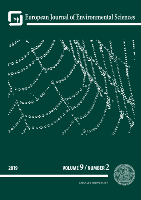
European Journal of Environmental Sciences
Bridging Science and Policy for a Greener EuropeEuropean Journal of Environmental Sciences is a prominent open-access journal dedicated to disseminating high-quality research in the field of environmental science. Published by Charles University, Faculty of Mathematics & Physics, this journal has been a vital platform since 2011, facilitating free access to insightful studies and findings pertinent to pressing environmental issues. Its scope encompasses crucial topics in Ecology, Management, Monitoring, Policy, Law, Nature and Landscape Conservation, and Pollution. With a significant presence in the academic community, the journal currently holds a Q3 and Q4 category ranking in various subfields of environmental science, as assessed in 2023, showcasing its relevance and impact in the discipline. Researchers, professionals, and students engaging with the European Journal of Environmental Sciences will find it an essential resource for enhancing their understanding of environmental challenges and contributing to innovative solutions.

Landscape Architecture Frontiers
Cultivating knowledge in landscape architecture.Landscape Architecture Frontiers, an esteemed journal published by Higher Education Press, serves as a pivotal platform for the dissemination of innovative research and critical thinking within the field of landscape architecture. Recognized for its commitment to advancing global discourse on sustainable design, environmental stewardship, and urban ecology, the journal's content is crucial for researchers, professionals, and students alike who are dedicated to shaping the future of landscape architecture. With a diverse range of topics covered, including landscape planning, restoration ecology, and cultural landscapes, this journal aims to foster interdisciplinary collaboration and promote best practices in the discipline. Although specific metrics like the impact factor and HIndex are not provided, the journal's reputation within the academic community underlines its significance in contributing to ongoing education and professional development in landscape architecture. For those interested in open access options, Landscape Architecture Frontiers encourages engagement and wider readership through its research, making it an essential resource for anyone passionate about the transformative power of landscapes and public spaces.
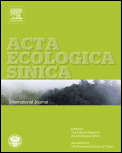
Acta Ecologica Sinica
Exploring the depths of ecological science for global impact.Acta Ecologica Sinica, published by Elsevier, is a prominent journal in the field of ecology, with a strong focus on fostering understanding in ecological principles and their applications. Established in China, this journal holds an impressive Q2 categorization in both Ecology and Ecology, Evolution, Behavior and Systematics as of 2023, positioning it within the top tier of ecological research. With its Scopus rankings placing it in the 81st and 78th percentiles in relevant ecological domains, it serves as a vital platform for researchers and practitioners to disseminate findings that promote ecological sustainability. Although it operates under a traditional access model, its significant impact is underscored by its systematic convergence of key ecological inquiries across multiple years (2006-2008, 2014, 2017-2023). By engaging with the latest empirical studies, theoretical advancements, and methodological innovations, Acta Ecologica Sinica is indispensable for scholars dedicated to advancing ecological knowledge and addressing environmental challenges.
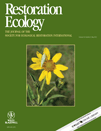
RESTORATION ECOLOGY
Advancing the Science of Ecological RenewalRESTORATION ECOLOGY is a leading international journal dedicated to the science and practice of ecological restoration, published by WILEY. With an ISSN of 1061-2971 and a robust E-ISSN of 1526-100X, this journal has successfully positioned itself within the top quartiles (Q1) in significant categories such as Ecology, Evolution, Behavior and Systematics, and Nature and Landscape Conservation, showcasing its high-impact contributions to these vital fields. RESTORATION ECOLOGY has been actively disseminating critical research since 1993 and continues to thrive as it converges toward 2024. Ranked impressively within Scopus, it stands at #98 out of 721 in Agricultural and Biological Sciences and #30 out of 211 in Environmental Science, emphasizing its substantial influence and reach. While the journal operates under traditional access guidelines, it serves as an invaluable resource for researchers, professionals, and students alike, aiming to advance knowledge and practical solutions for biodiversity conservation and ecosystem rehabilitation globally. For those interested in the intersection of ecological theory and practical restoration applications, RESTORATION ECOLOGY is a key outlet for fostering dialogue and collaboration.

Ecosistemas
Unveiling the dynamics of nature through collaborative study.Ecosistemas is a prominent Open Access journal published by the ASOCIACION ESPANOLA ECOLOGIA TERRESTRE, specializing in the field of ecology. Since its inception in 2001, it has dedicated itself to advancing ecological knowledge and research, fostering an inclusive platform for the dissemination of cutting-edge studies that span ecological interactions, sustainability, and biodiversity. The journal, based in Spain, has established its reputation with notable rankings such as Q3 in the field of Ecology and Q4 in Ecology, Evolution, Behavior, and Systematics, reflecting its commitment to quality research. With a Scopus Ranks position placing it in the 40th and 37th percentiles for its categories, Ecosistemas is integral to the academic community, serving researchers, professionals, and students alike. It provides a vital resource for those seeking to understand ecological dynamics and environmental challenges, facilitating open access to important findings and discussions that shape the future of our ecosystems.
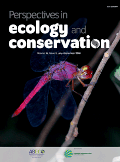
Perspectives in Ecology and Conservation
Innovative insights into conservation challenges and solutions.Perspectives in Ecology and Conservation, published by Elsevier Science Ltd, is a leading academic journal dedicated to advancing the fields of ecology, conservation, and environmental management. With a Q1 ranking in multiple categories, including Ecology, Management, Monitoring, Policy and Law, and Nature and Landscape Conservation, this journal boasts an impressive standing among its peers, making it essential reading for researchers and professionals. Since its inception in 2017 and running through 2024, it aims to provide innovative perspectives and critical analyses that enhance our understanding and practices in conservation science. The journal is accessible through open access options, facilitating broader dissemination of knowledge. Its commitment to addressing contemporary ecological challenges reinforces its importance in the academic community, promoting sustainable practices and informed policy-making in the face of urgent environmental issues.

Folia Oecologica
Empowering Open Access to Vital Ecological Research.Folia Oecologica is a distinguished open-access journal published by WALTER DE GRUYTER GMBH, focusing on critical research in the fields of agricultural and biological sciences, ecology, and forestry. Established as a vital platform for the dissemination of knowledge, this journal has been providing free access to its valuable content since 2017, catering to an international audience engaged in environmental and ecological studies. With its ISSN 1336-5266 and E-ISSN 1338-7014, Folia Oecologica has earned notable ranks in Scopus, placing it in the 62nd percentile for Agricultural and Biological Sciences and the 50th percentile for Environmental Science. The journal's commitment to high-quality research is reflected in its positions in the Q2 and Q3 quartiles across various categories in 2023. As it converges years from 2006 to 2024, Folia Oecologica continues to foster scholarly dialogue and collaboration among researchers, professionals, and students, making significant contributions to the understanding and preservation of our ecological systems.

Anthropocene Coasts
Championing Global Solutions for Coastal ChallengesAnthropocene Coasts is a pivotal peer-reviewed journal published by SpringerNature, dedicated to advancing the interdisciplinary understanding of coastal systems in the context of the Anthropocene epoch. Since its inception in 2018, the journal has focused on critical issues at the intersection of Nature and Landscape Conservation, Ocean Engineering, Oceanography, and Waste Management and Disposal, achieving an impressive Q2 ranking in all these categories as of 2023. With a country of origin in Canada, this journal not only addresses significant environmental challenges, but also promotes innovative solutions and sustainable practices that resonate globally. Researchers, professionals, and students engaged in marine science, environmental studies, and engineering will find valuable insights and cutting-edge research disseminated through this open-access platform. By fostering collaboration and knowledge-sharing, Anthropocene Coasts empowers its audience to contribute to the sustainable management of coastal environments in an era of rapid change.

Acta Scientiarum Polonorum-Formatio Circumiectus
Championing open access to vital environmental knowledge.Acta Scientiarum Polonorum-Formatio Circumiectus is a distinguished open-access journal published by WYDAWNICTWO UNIWERSYTETU ROLNICZEGO HUGONA KOLLATAJA KRAKOWIE, dedicated to advancing knowledge in the fields of ecological modeling, environmental engineering, nature and landscape conservation, and water science and technology. With a commitment to accessibility since its inception in 2006, this journal provides a platform for researchers, professionals, and educators to disseminate their findings to a global audience. Although currently categorized in the Q4 quartile across various ecological disciplines, the journal's aim is to foster critical discussions and innovative approaches to pressing environmental challenges. The journal is based in Poland, and its scope encompasses a wide array of research areas pertinent to contemporary environmental studies. Acta Scientiarum Polonorum serves as an essential resource in its field, encouraging empirical research and theoretical advancements that collectively contribute to sustainable development and environmental stewardship.
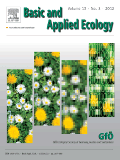
BASIC AND APPLIED ECOLOGY
Fostering groundbreaking research in the heart of ecology.BASIC AND APPLIED ECOLOGY, published by Elsevier GmbH in Germany, stands out as a premier journal in the field of ecology, evolution, behavior, and systematics. With its ISSN 1439-1791 and E-ISSN 1618-0089, the journal enjoys a distinguished reputation, evidenced by its classification in the Q1 category for Ecology in 2023 and impressively ranking #89 out of 721 in this domain according to Scopus. Since its inception in 2000, it has served as a vital platform for disseminating high-quality research that bridges theoretical insights and practical applications in ecology. Researchers, professionals, and students alike can look forward to the latest findings that not only foster a deeper understanding of ecological processes but also inform sustainable practices crucial for our environment. As the journal continues its journey through to 2024, it remains committed to advancing ecological knowledge and supporting innovative research in an ever-evolving field.